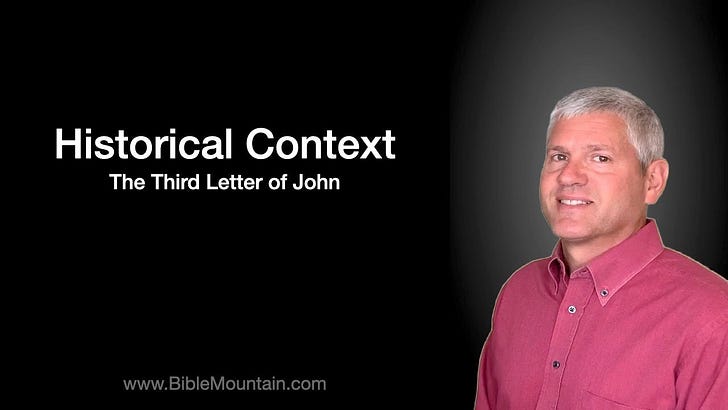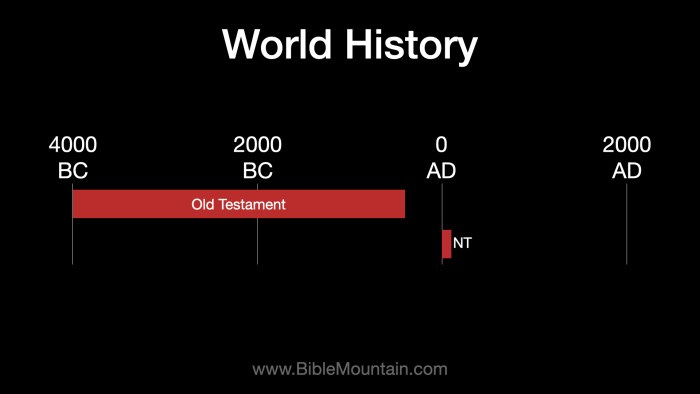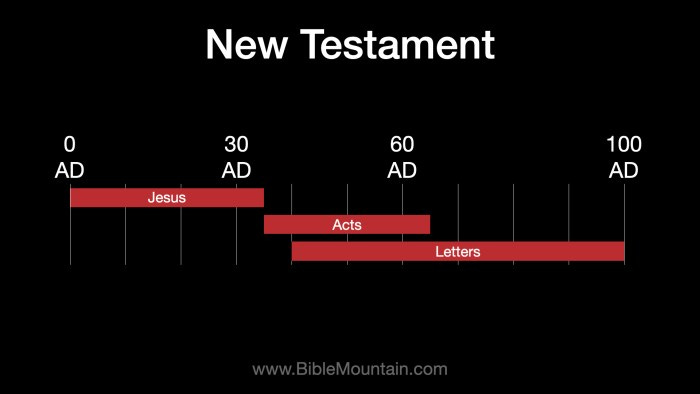The Historical Context of 3 John
Thanks for visiting Bible Mountain. This is the third in a series of lessons on The Third Letter of John. Watch the video or scroll down to read the transcript. In this lesson I explain the historical context of 3 John.
Transcript:
Hi, thanks for watching Bible Mountain. This is the third lesson in a series of lessons on The Third Letter of John.
In the first lesson I talked about why. Why is Third John in the Bible? The Third Letter of John is a letter about how Christians should treat other Christians, particularly Christians who are strangers, and Christians who are engaged in evangelism or missionary work.
In the second lesson I talked about the biblical context. Third John is the shortest book of the Bible. It's also the third to last book of the Bible. Third John is part of a collection of letters that were written by various church leaders to Christians and other churches explaining how people are to live, and how we as Christians are to conduct ourselves as followers of Jesus Christ. In this lesson, I’m going to look at the historical context.
Let’s start with a timeline of world history. On the left of the timeline we have 4000 BC. That's roughly when creation happened. On the right we have 2000 AD. That's roughly when you and I are living. The Old Testament tells us about events that took place from the creation of the world around 4000 BC, up to about 400 BC. That is a timespan of about 3,600 years and covers almost two thirds of world history.
The New Testament tells us about events that took place in the first century AD. That is a time span of 100 years. The Third Letter of John is in the New Testament, so let's take a closer look at the New Testament time period.
If we look at a timeline of the New Testament, we have 0 AD on the left, and 100 AD on the right. Jesus lived on earth during the first part of the first century AD. The birth of Jesus was somewhere around 0 AD. His death, burial, resurrection, and ascension took place somewhere in the mid 30s AD. The earthly life of Jesus is recorded in the New Testament books of Matthew, Mark, Luke, and John.
After Jesus rose from the dead and before He ascended to heaven, He told His apostles to go out and tell the world about Him. The Book of Acts records various things the apostles did to fulfill that commission. The activities recorded in the book of Acts took place roughly between the mid-30s AD and the mid-60s AD.
While the apostles were traveling around telling the world about Jesus, some Church leaders wrote letters to other churches and other Christians. These letters contain doctrine. They also contain instructions on how we as humans should live, and how we as Christians should conduct ourselves as followers of Jesus Christ. Third John is one of those letters.
These letters in the New Testament, including Third John, are some of the last portions of Scripture that were ever written. Here's why that's important. Suppose your employer sends out a memo stating the current policy on how to request vacation time. Now suppose a year later your employer sends out a second memo with a new policy on requesting vacation time. Then two months later you need to request some vacation time so you re-read the policy. Are you going to put more emphasis on the first memo or the second memo? The second memo is more important because the second memo was written later in time and supersedes the first memo. The second memo is the current policy and that's the procedure you need to follow when requesting vacation time.
We have something similar with the Bible. The Bible was written over a period of 4,000 years. During those 4,000 years, there were different times when God changed the rules by which people need to live. So when we read through the Bible, sometimes we see a passage that tells people to behave one way, and then elsewhere in the Bible we see a passage that appears to tell people to behave a different way. How do we know what to do?
Well, we need to follow the later portion of Scripture, because the later portion of Scripture supersedes the earlier portion of Scripture, just as the later memo from your employer supersedes the earlier memo from your employer.
The Third Letter of John and the other letters that we find in the New Testament are some of the last portions of Scripture that were written. That means these letters have not been superseded by later scripture. Therefore, the instructions in these letters and the instructions in Third John are important to us because they contain instructions that still apply to our lives today. So, if we are serious about our walk with Jesus and want to live the way Jesus wants us to live, we need to read, study, and know Third John because it contains instructions that Jesus expects us to follow today.
Thanks again for visiting Bible Mountain. I greatly appreciate you spending some of your valuable time watching my videos and reading my articles. The next lesson will explain the geographical context of 3 John. If you haven't already done so, please join either my email list or my Patreon Page in order to make sure you receive that lesson as well as all of the future lessons in this series.
The email list is free. In order to join, go to Bible Mountain dotcom, click on email, and that will take you to a page where you can sign up. Your email address will not be sold nor given away.
Patreon is a paid subscription. This helps me cover the costs of producing Bible Mountain. If you sign up today I will send you a free music CD. In order to join, go to Bible Mountain dotcom, click on Patreon, and that will take you to a page where you can join.
Once again, thank you for watching Bible Mountain.
Scripture quotations from 3 John taken from a translation by Bible Mountain.
“All other Scripture quotations taken from the New American Standard Bible®,
Copyright © 1960, 1962, 1963, 1968, 1971, 1972, 1973,
1975, 1977, 1995 by The Lockman Foundation
Used by permission." (www.Lockman.org)




